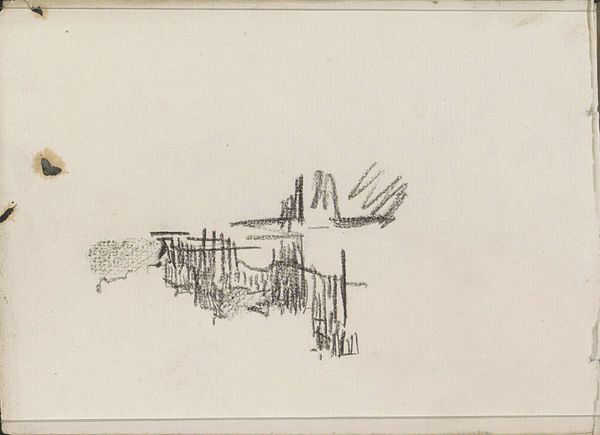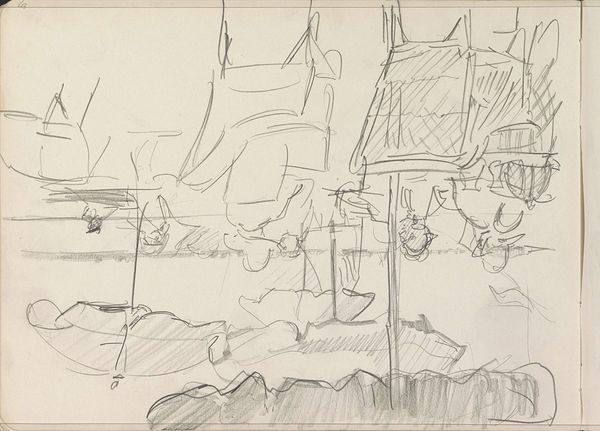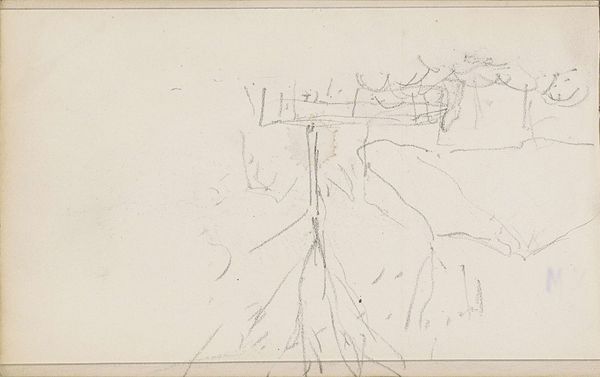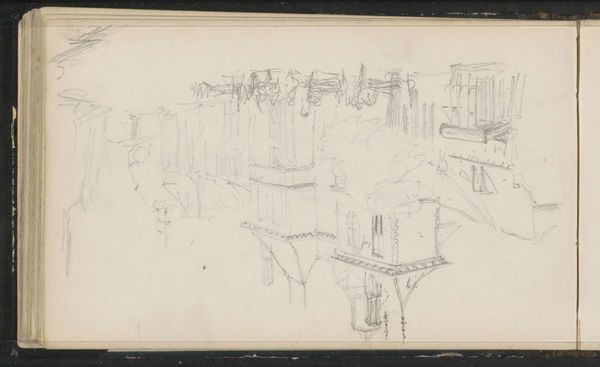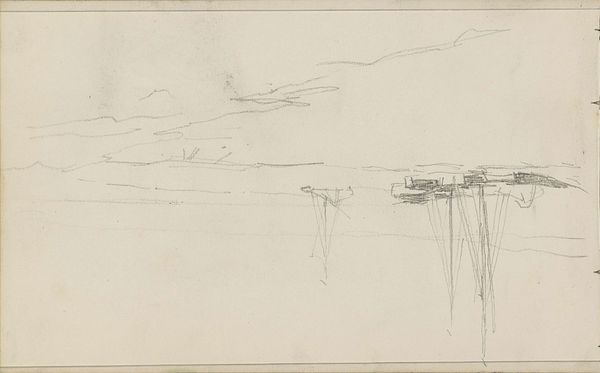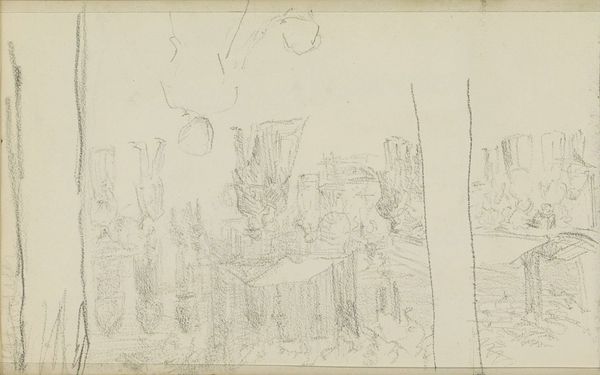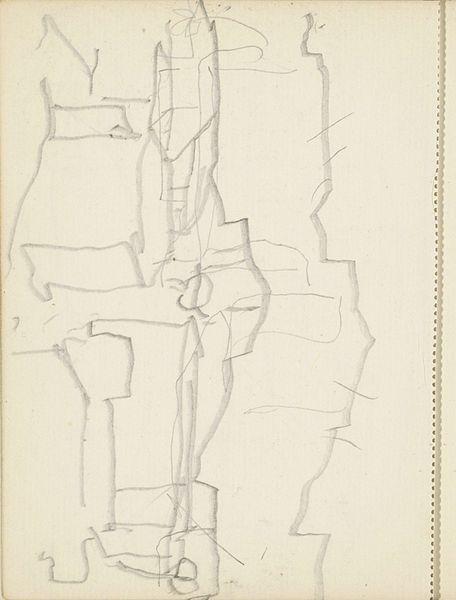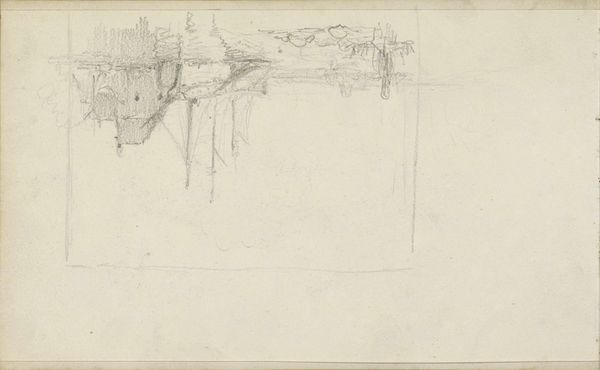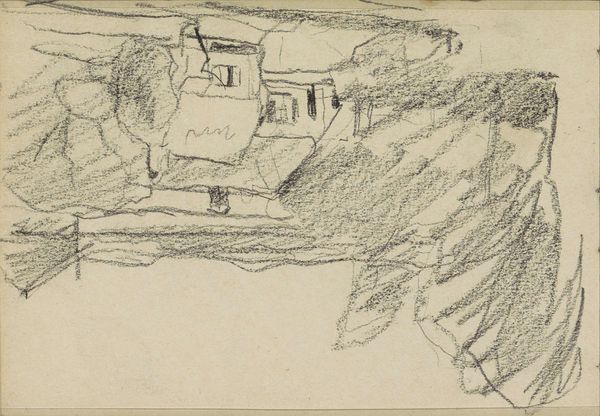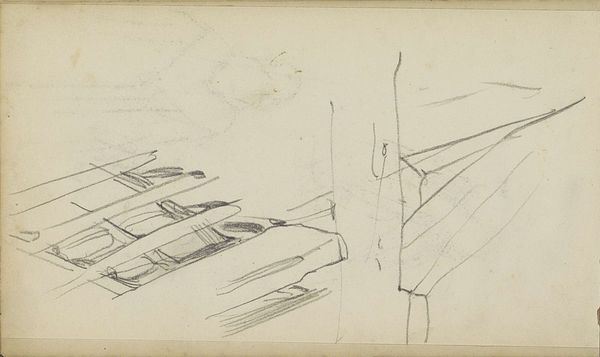
drawing, pencil
#
drawing
#
impressionism
#
incomplete sketchy
#
hand drawn type
#
landscape
#
form
#
personal sketchbook
#
idea generation sketch
#
sketchwork
#
ink drawing experimentation
#
pen-ink sketch
#
pencil
#
line
#
sketchbook drawing
#
sketchbook art
#
realism
#
initial sketch
Copyright: Rijks Museum: Open Domain
Editor: This is "Saddled Donkeys in a Row" by Anton Mauve, likely from between 1848 and 1888. It's a pencil and pen sketch, so quite minimal. The composition is loose, almost like a fleeting thought. What do you see in this work beyond the obvious subject matter? Curator: I see an investigation of labor. These aren't romanticized animals; they are tools. The sketch's roughness, its very *unfinished* nature, speaks to the repetitive, almost industrial process of artistic production at the time. Mauve is using the cheapest available materials to capture a scene representing working animals in the landscape. Consider the social context – who used donkeys, and for what purposes? Editor: So, it's less about the picturesque countryside and more about… the economics of the landscape? The social standing of these animals. Curator: Precisely. Look at the rapid lines. It’s less about aesthetics, more about recording, documenting. Think about the price of materials. This sketch probably served to produce finished and more elaborate works which sold for much more on the art market. He captured the bare bones, perhaps. Where did the pencil come from? Who made it? What kind of paper is that? How does its manufacturing affect the composition, compared to, say, oil on canvas? These questions become important. Editor: It’s like a raw ingredient before a fully processed meal. I never thought about art in terms of production chains and economies before. Curator: Exactly. And remember, even "high art" is built on a foundation of labor and material. Acknowledging that shifts how we value both the artwork, and the work which enabled it. Editor: This sketch opens up a lot of new avenues of interpretation. It's a whole new perspective on art history. Curator: Indeed. It requires that we consider the means, the materiality and the making. And its legacy.
Comments
No comments
Be the first to comment and join the conversation on the ultimate creative platform.

